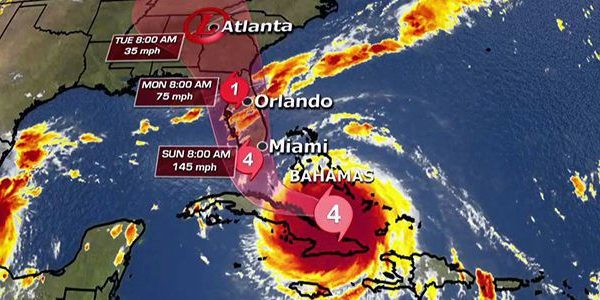Click to join the conversation with over 500,000 Pentecostal believers and scholars
Click to get our FREE MOBILE APP and stay connected
| PentecostalTheology.com



Abstract
The pneumatology of the Pastoral Epistles (PE) appears at first glance to be rather limited. The term pneuma occurs only seven times in the PE. In this essay, I will address the seven references in canonical order and then summarize the pneumatology of the PE. The PE reinforce the traditional systematic theological perspective of the role of the Spirit as active in revelation and the salvation process and as empowering persons for service. The Holy Spirit is the main person of the Trinity actively working in eschatological salvation for all by bringing forth the fruit of holiness and working powerfully through the sufferings of gifted persons.
1 Timothy, 2 Timothy, and Titus are personal letters most likely written by the apostle Paul to Timothy and Titus, his beloved disciples and trustworthy coworkers in the Gospel.1 Paul refers to them as his “true child[ren] in the common faith” (Titus 1:4 see also 1 Tim 1:2; 2 Tim 1:2).2 The letters are canonically arranged by length and commonly referred to as the Pastoral Epistles (PE). The pneumatology of the PE appears at first glance to be rather limited.3 The term pneuma occurs only seven times in the PE.4 In the remaining essay, I will address the seven references in canonical order and then summarize the pneumatology of the PE.
1 1 and 2 Timothy
1 Tim 3:14–16 states what many consider to be the primary purpose of the letter. Paul is concerned about the way persons belonging to “the household of God,” which is “the church of the Living God,” are conducting themselves in his absence. 3:16 ends the extended discussion on godly household behavior via a hymn about Jesus that was most likely sung in the Christian communities. The phrase “who was manifested in flesh, vindicated/confirmed in spirit” has generated much discussion. The first part of the phrase may refer to the incarnation, the revelation of God through Jesus in human flesh. The second part of the phrase may then refer to his resurrection by the Spirit. Jesus manifests loving godliness (a key concern of the letter) for us on earth in the flesh as he made atonement for us. God further vindicated his life through resurrection by the Holy Spirit after Jesus endured the humiliation of crucifixion. The humiliation was not taking on flesh, not incarnation, but the manner of his death. God gave him over to death, but humanity crucified him (Acts 2:32). Jesus, fully human (and fully divine), is glorified bodily by the Spirit and is now in the same celestial realm as the Holy Spirit and angelic spirit beings.5 Jesus is in the heavenlies (glory), but the Holy Spirit is present in and with the household of God, enabling her to live virtuously.
1 Tim 4:1 is a clear reference to the Holy Spirit being active in the communities. The Spirit is depicted as speaking, warning the communities that in these last times “deceitful spirits” (the plural form of pneuma) are at work among them, drawing some away from the faith to the point of apostasy. These “spirits” are most likely demons or fallen angels. Originally created good, they are now corrupted, fallen, and evil. The Holy Spirit uses various ways to speak to the community, with prophetic speech being the most common (see 1 Tim 1:18 and 1 Tim 4:14). Here the Spirit is working to remind the community of what Jesus had already said (see John 14–16). The Spirit is also making clear that before the return of Christ, believers will face demonic opposition, and the primary weapons of the demonic are deception through words, through false yet extraordinary counterfeit signs, and through immoral ways of living (2 Tim 2:16–17).
2 Tim 1:7 is about Timothy and the gift of God that is the Holy Spirit.6 Paul challenges Timothy to “fan into flame” the “gift (charismata) of God” that came through Paul laying hands on him (2 Tim 1:6). This differs from 1 Tim 4:14, in which Timothy receives the gift through prophecy and the laying on of hands by the elders/presbyters but continues to confirm Timothy’s calling through prophecies made about him (1 Tim 1:18). 1 Tim 1:18 and 4:14 are about Timothy’s calling and gifting by the Holy Spirit for ministry. Paul is reminding Timothy and the communities in Ephesus that Timothy is called by the Holy Spirit and gifted by the Holy Spirit in ministering to the household of God. In 2 Tim 1:7 Paul states, “God did not give us a spirit (pneuma) of cowardliness but of love, power, and self-control.” The verse presents a stark contrast between cowardliness and love, power, and self-control and thereby emphasizes the positive gift of God. Is Paul talking about the Holy Spirit as the source of love, power, and self-control, or is Paul saying that God gave to Timothy (his spirit or inner being) love, power, and self-control? Translators have rendered this verse both ways.7
Gordon Fee makes insightful comments on these passages. Fee makes a plausible argument that in 1 Tim 1:8 and 1 Tim 4:14, Paul is reminding Timothy and the established communities in Ephesus, especially the elders of which a few might be understood as teaching falsely, that Timothy has a “Spirit-initiated and Spirit-called ministry” that was attested to in the presence of the communities.8 2 Tim 1:7, qualified by subtle yet substantial grammatical differences, is referring to the gift of God that is the reception of the Holy Spirit. Fee argues that “elsewhere in Paul the Holy Spirit is expressively spoken of as given by God to be in believers (1 Thess 4:8; 1 Cor 6:19; 2 Cor 1:22).”9 2 Tim 2:7 is about receiving the Holy Spirit that is God’s gift—the Spirit of love, power, and discernment.10
2 Tim 1:14 contains an imperative and a clear appeal to the Holy Spirit. Timothy is to “guard the deposit” by means of “the Holy Spirit that is in us.” The deposit most likely refers to the previous discussion of sound teaching associated with the gospel (2 Tim 1:1–13). The Spirit is the source of truth, not of false teachings. In order to stand firm and care for the communities, Timothy can cooperate with the Holy Spirit, who will enable him to stay true to the faith. The Spirit is the present reality working powerfully in believers because of our Savior Jesus Christ.
2 Tim 3:16 is a favorite verse for evangelicals and pentecostals for they have always understood themselves as people of the Book.11 “All Scripture is God breathed” (theopneustos).12 Scripture is divinely inspired; hence, it has divine authority in that it is useful for salvation. Scripture (here referring to the OT) rightly interpreted in light of the gospel, in continuity with the received tradition and with the aid of the Holy Spirit, is “useful” for teaching and training in righteousness (1 Tim 1:8–9). Scripture is sanctified by the Spirit, hence put into service by God for the benefit of the church. These writings are set apart from and over all other useful writings. The community is birthed by the Spirit, not the book inspired by Spirit. The Book of all books that should be privileged and cherished in God’s household is Scripture.13
2 Tim 4:22—“The Lord be with your spirit”—is referring to Timothy as a complete person rather than to some inner spiritual dimension. 2 Timothy is the most intimate of the PE; yet, Paul concludes this letter by reaffirming the presence of the collective community (“Grace be with you all”). Grace opens the letter, and grace closes the letter (2 Tim 1:2, 4:22). This reiterates that all aspects of salvation are experienced because of God’s grace.
2 Titus
Titus 3:5 is an important text that ties together all the spirit passages in the PE. It is worth quoting in context:
But when the kindness and love of God our Savior appeared, he saved us, not because of righteous things we had done, but because of his mercy. He saved us through the washing of rebirth and renewal by the Holy Spirit, whom he poured out on us generously through Jesus Christ our Savior, so that, having been justified by his grace, we might become heirs having the hope of eternal life.
Titus 3:4–6, NIV, my italics
The Holy Spirit brings about regeneration or rebirth. The imagery of washing and renewal hints to water baptism and Spirit baptism but most definitely is talking about cleansing and purifying from contamination of sin (sanctification) and the demonic (deliverance). The Holy Spirit personally appropriates the atoning work of Jesus to those who respond to the gospel; therefore, “[t]he Spirit plays a crucial role in Christian conversion and ongoing Christian life.”14 This is because God is compassionate and merciful, desiring all to be saved (1 Tim 4:10; Titus 3:4–5). The relationship between the Spirit and Jesus is intimately intertwined but not indistinguishable. God initiates salvation—it is the grace of God given through faith in Christ (2 Tim 3:15)—and God sustains believers in salvation through the gracious gift—the Holy Spirit and the gifts of the Holy Spirit. All are called to a holy life grounded in love and manifested in faithfulness or godliness (2 Tim 1:9). This generates hope and encourages holy endurance for God is for, among, and working in believers.
3 Summary
In sum, the PE reinforce the traditional systematic theological perspective of the role of the Spirit as active in revelation and the salvation process, and as empowering persons for service. The Holy Spirit is the main person of the Trinity actively working in eschatological salvation for all by bringing forth the fruit of holiness and working powerfully through the sufferings (1 Tim 3:12) of gifted persons. Salvation is possible because of God’s gracious action in and through Jesus and the Spirit.
To be in covenant relationship with God is to be in the household of God which is the church (1 Tim 3:14–15). The Spirit, who vindicated Jesus, comes from God and is poured out on believers personally and corporately, and is working to instill loving holiness through the washing and renewing of the community. This includes maintaining sound tradition and proper teaching of Scripture, for through it we save ourselves and those who take heed (1 Tim 4:16). The church is to follow faithfully the leading of the Spirit in continuing the ministry of Jesus Christ; hence prophetic speech and other spiritual giftings aid her in the salvific journey. Godly virtue is the fruit of the Spirit manifested personally and publicly through faithful witness to Jesus Christ our Savior (2 Tim 2:19). By the Spirit, the household of God engages in spiritual warfare by manifesting love, power, and discernment for the sake of the world, especially humanity, whom God is saving (1 Tim 2:4, 5:15). In the words of Frances Young, the Spirit “empowers the life of the Christian … bearing fruit in the life of the Church, which lives between the ‘epiphanies.’ ”15 Far from being peripheral, the PE contributes richly to the pneumatology of the NT.


